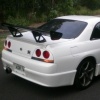R33 Rb30 Conversion
Announcements
-
Similar Content
-
Latest Posts
-
By Dose Pipe Sutututu · Posted
Please also tow another Skyline soon too haha -
By Dose Pipe Sutututu · Posted
Wild idea, can you do half and half? Lol. -
By Sam Hussain · Posted
I’ve dedicated my career to the car transport industry. Over the years, I’ve worked across every part of the process — from arranging pickups and managing drivers, to ensuring vehicles are delivered safely and on time. I know how much people value their cars, whether it’s a family vehicle, a dealership delivery, or a classic car, and I make it my responsibility to treat every transport job with care and transparency. As an independent member of the Car Transport Association, I represent not just my own work, but also the broader interests of customers and carriers. I believe in raising standards across the industry — better safety checks, clearer condition reporting, fairer pricing, and honest communication. My approach is practical: solve problems before they happen, make processes easier for drivers and customers, and always keep the focus on reliability. What sets me apart is my commitment to clear communication. I provide updates, photos, and accurate delivery times so that customers know exactly where they stand. My goal is simple: safe, transparent, and trustworthy vehicle transport, every single time. If you’re looking for a partner in car transport who values accountability and professionalism, I’d be glad to connect. -
By Dose Pipe Sutututu · Posted
Because sometimes I do dumb shit and because I kept thinking about 6.6kWh worth of PVs wouldn't be fully enough if I'm consuming during the day as well as charging. So I did a thing, added another 5kW of PVs lol. Since there's a spare MPPT port, why the fk not?
-








Recommended Posts
Create an account or sign in to comment
You need to be a member in order to leave a comment
Create an account
Sign up for a new account in our community. It's easy!
Register a new accountSign in
Already have an account? Sign in here.
Sign In Now